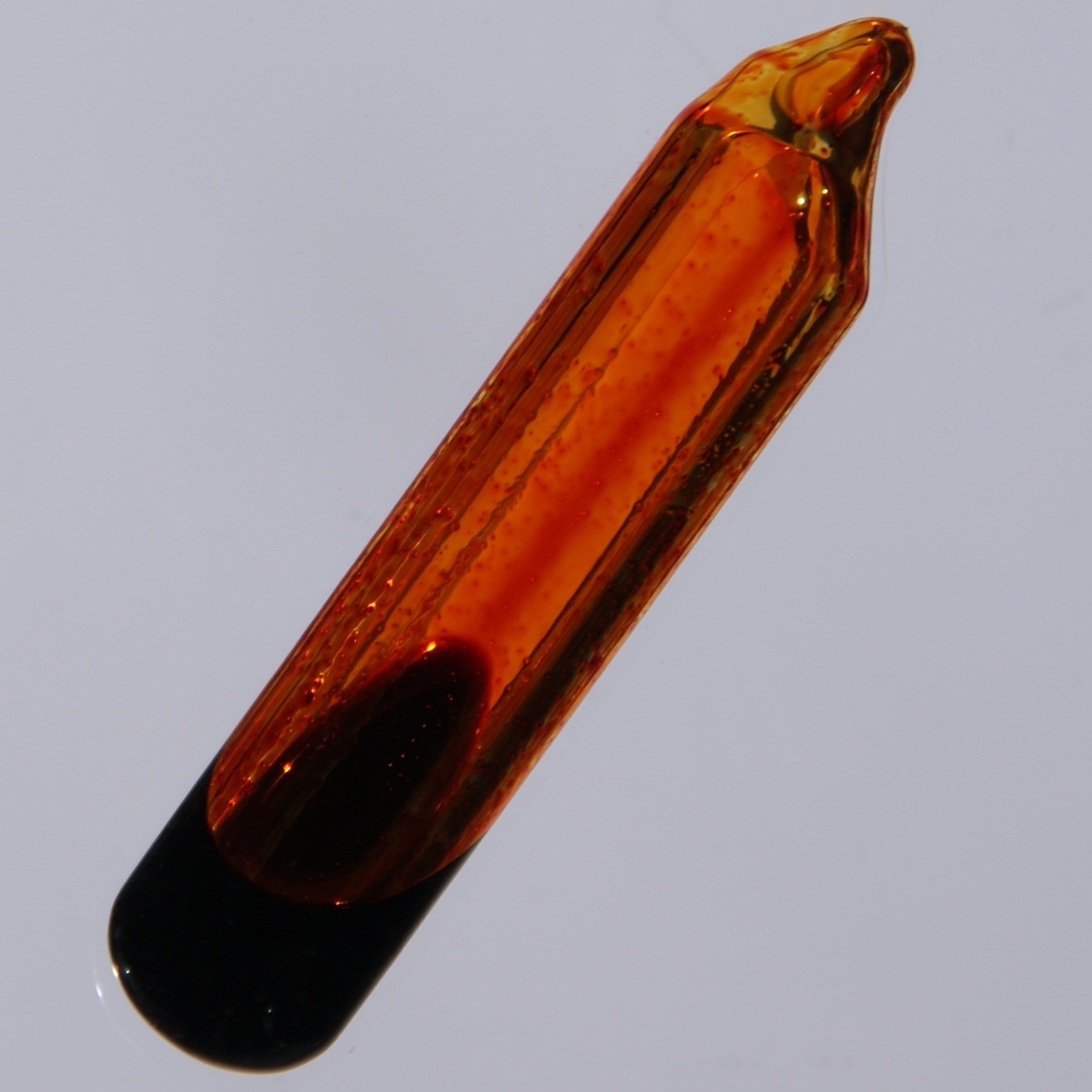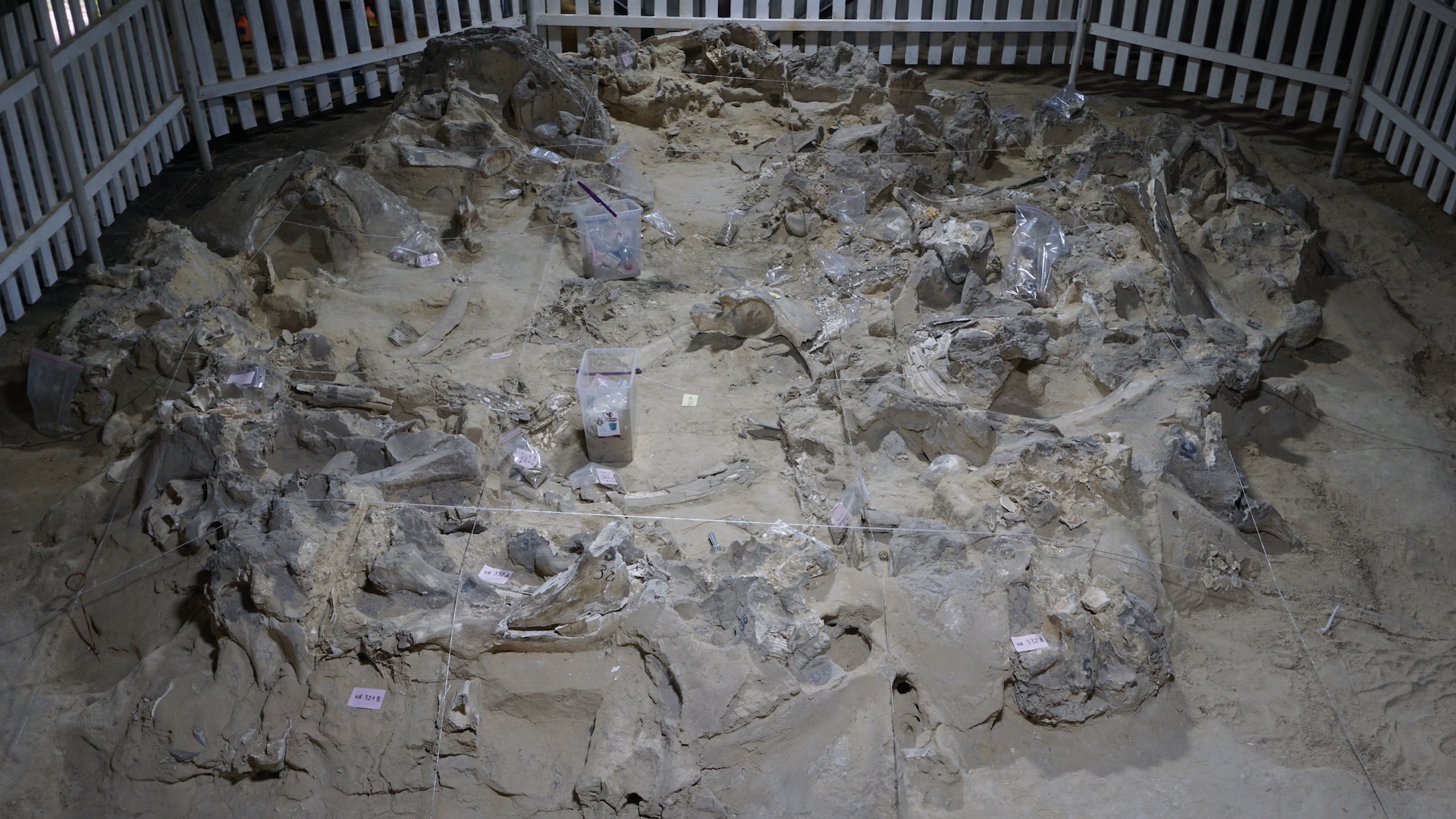Facts About Bromine

Smelly element No. 35, bromine, is a fairly abundant element but has a rare property: it is the only nonmetal to exist in liquid form at room temperature, and one of only two elements (the other being mercury) that is liquid at room temperature and pressure.
It is the 44th most common element in Earth's crust, according to Periodic Table with an abundance of 2.4 parts per million by weight, according to Chemicool. Bromine occurs in compounds present in sea water, natural brines and salt-lake evaporates. Bromine mineral deposits in the United States are in natural brine wells in Michigan and Arkansas. Worldwide production estimated to be around 330,000 tons per year. It is also recovered in Israel, Russia, France and Japan, according to Minerals Education Coalition.
Bromine is very harmful to the atmosphere. According to Chemicool, bromine atoms are 40 to 100 times more destructive in the ozone layer than chlorine atoms. Up to half of the loss of ozone above Antarctica is due to reactions involving bromine. Methyl bromide, used as a fumigant, is the largest source of ozone-depleting bromine. About 30% of the bromine in the atmosphere comes from human activities, the rest is natural.
Just the facts
- Atomic number (number of protons in the nucleus): 35
- Atomic symbol (on the periodic table of elements): Br
- Atomic weight (average mass of the atom): 79.904
- Density: 1.805 ounces per cubic inch (3.122 grams per cubic cm)
- Phase at room temperature: Liquid
- Melting point: 19.4 degrees Fahrenheit (minus 7 degrees Celsius)
- Boiling point: 138.0 F (58.9 C)
- Number of natural isotopes (atoms of the same element with a different number of neutrons): 2. There are also at least 24 radioactive isotopes created in a lab.
- Most common isotopes: Br-79 (50.7 percent of natural abundance), Br-81 (49.3 percent of natural abundance.
History
Two scientists working independently discovered bromine in the 1820s, according to Peter van der Krogt, a Dutch historian.
Carl Löwig, a German chemistry student studying under German chemist Leopold Gmelin, isolated liquid bromine in 1825 by taking a sample of water from a salt spring in Bad Kreuznach and adding chlorine, according to Chemicool. After shaking the solution with ether, Löwig discovered a red-brown substance in the solution and isolated it by evaporating the ether. Gmelin advised that his student produce more of the substance so that it could be studied in further detail. By the time Löwig had produced more of the substance, after having been slowed between winter exams and holidays, another scientists had already published his findings.
That scientist, Antoine-Jérôme Balard, a French chemist, isolated bromine when studying a brown seaweed known as fucus, according to Peter van der Krogt. Balard took a sample of the brine in which the seaweed was found and distilled the mixture of brine with chlorine to produce a dark red liquid, according to Chemicool. He originally thought that it was either a chlorine or iodine compound, and when he could not isolate either element, he proposed that he had in fact found a new element. Balard suggested the name muride, from the Latin word "muria" or brine, for his new element. His results were published in 1826.
Who knew?
- Bromine is a halogen, according to Chemicool. Halogen elements (fluorine, chlorine, bromine, iodine and astatine) are never found alone in nature and produce salts when reacting with metals, according to Chemistry Explained.
- The name bromine comes from the Greek word "bromos" for stench, according to Los Alamos National Laboratory. The reddish-brown liquid evaporates readily into a red vapor with a strong odor resembling chlorine.
- Bromine is hazardous, according to Lenntech. It is corrosive to human tissue in its liquid state, and it irritates eyes and the throat and is highly toxic when inhaled in a vapor state. Bromine damages many major organs, including the liver, kidneys, lungs, and stomach, and, in some cases, can cause cancer.
- Bromine can be absorbed into the body via contaminated water and food, breathing it in, and through the skin, according to the Centers for Disease Control.
- Bromine can cause spontaneous ignition when combined with potassium, phosphorous and tin, and with many chemicals as well, according to Cameo Chemicals.
- Bromine has a large variety of uses including in agricultural chemicals, insecticides, dyes, pharmaceuticals, flame-retardants, furniture foam, gasoline, plastic casings for electronics, and film photography, according to the Royal Society of Chemistry.
- Bromine is used to purify water, in medicines, and as sanitizers, according to Los Alamos National Laboratory.
- Bromine is also used to reduce mercury emissions by up to 90 percent from coal-fired power plants, according to the Bromine Science Environmental Forum. Bromine added to the process oxidizes the mercury, making it easier to retrieve by emission control equipment.
- Due to toxicity and environmental concerns, the use of bromine as fire retardants and in agriculture is being or has been phased out, according to the Royal Society of Chemistry.
- Ancient civilizations produced an expensive purple dye from organic bromine compounds secreted from the murex, a sea mussel, according to the Jefferson Laboratory.
- The human body contains about 0.0004 percent bromine, according to Minerals Education Coalition, although no use for bromine in the human body is known.
Current research
One area of research in which bromine is studied is how bromine affects the atmosphere. A resource published by the National Oceanic and Atmospheric Administration (NOAA) describes how bromine, as well as chlorine, destroys ozone molecules during three reaction cycles. In the first cycle, reactions between chlorine or chlorine monoxide interacting with ozone leads to monotonic (O) or diatomic oxygen (O2). The second cycle also reacts chlorine with ozone to result in diatomic oxygen. The third cycle shows bromine reacting with ozone to also result in diatomic oxygen. In all of these cases, sunlight is needed for the reactions so ozone depletion is greater during the summer months and greatly slows down or ceases in the winter months when there is minimal to no sunlight reaching the poles.
Get the world’s most fascinating discoveries delivered straight to your inbox.
There are several studies, including one study published in 2017 in the journal Atmospheric Chemistry and Physics by Bodo Werner, et al., a group of scientists from Germany, the United States, and the United Kingdom. The study used a variety of methods to calculate the amount of bromine present in the atmosphere. The study suggested that approximately one third of ozone depletion is due to bromine. According to the study, the bromine compounds in the atmosphere have four major sources:
- natural and anthropogenic sources
- halons
- so-called very short-lived species (VSLS)
- inorganic bromine that has been transported into the upper troposphere
Since the peak in 2000 with bromine levels approximately 20 parts per million, the levels of bromine in the atmosphere have been decreasing at a rate of 0.6 percent per year. Several resources were used in the authors' calculations and were focused in tropical and subtropical regions.
The NOAA also reported in late 2016 that levels of bromine and other ozone-depleting gases are decreasing in the atmosphere. The study looked at the atmosphere over Antarctica and the mid-latitudes and combined current values with observations dating back to the 1970s and projected values out through 2080. Using 1980 values as a benchmark, the researches forecast that ozone depleting gases primarily containing bromine and chlorine, will reduce to 1980 levels between 2040 and 2050 in the mid-latitudes and around 2070 over Antarctica. Decreased levels of these gases in the atmosphere are a part of ongoing efforts in slow climate change and to promote regeneration of the protective ozone layer.
Additional resources

Rachel Ross is a science writer and editor focusing on astronomy, Earth science, physical science and math. She holds a Bachelor of Arts in Philosophy from the University of California Davis and a Master's degree in astronomy from James Cook University. She also has a certificate in science writing from Stanford University. Prior to becoming a science writer, Rachel worked at the Las Cumbres Observatory in California, where she specialized in education and outreach, supplemented with science research and telescope operations. While studying for her undergraduate degree, Rachel also taught an introduction to astronomy lab and worked with a research astronomer.


